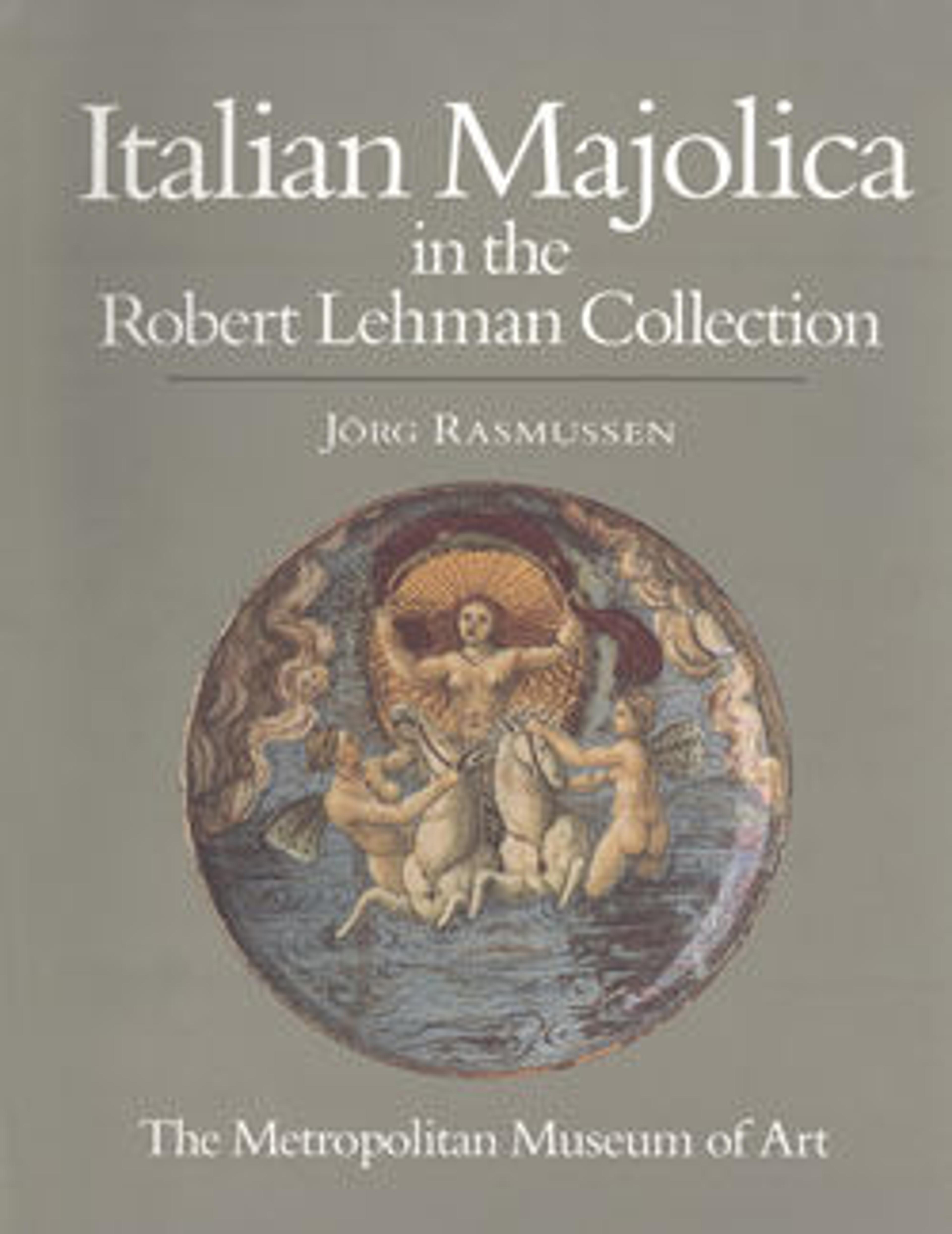Plate (piatto): The story of Aeneas
This plate formed part of one of the largest majolica services ever made, commissioned by Piero Maria Pucci (1467–1547), a member of a prominent Florentine family whose coat of arms features the head of a Black man in profile, a reference to their original surname, Saracini (meaning "Saracens"). Similar images had frequently appeared in European heraldry since the thirteenth century. Rooted in the subjugation of Muslims and peoples of Arab and African descent, this imagery often signified triumph in the Crusades or involvement in the slave trade. Here, a white band tied around the man’s head is inscribed with three T’s, an acronym for the Pucci family motto: Tempore tempora tempera (Time alleviates all troubles).
Thirty-seven pieces from the maiolica service survive (including four in the Lehman Collection: see also 1975.1.1134; 1975.1.1135; 1975.1.1137), all painted in Urbino by the celebrated maiolica painter Francesco Xanto Avelli da Rovigo in 1532 and 1533. Some pieces were sent to Gubbio to be completed with luster decoration under Xanto’s direction.
This particular plate represents Aeneas and his companions at the tomb of Polydorus, a subject derived from Virgil's Aeneid, Book III. The bleeding bush (painted in red luster) signals the presence of the corpse, while the coat of arms of the Pucci family, on an escutcheon surmounting a standard, identifies the patronage. The Aeneas plate shows Xanto's energetic line and exuberant use of warm colors, often washed into one another—deep oranges and yellows against strong greens and blues. The richly decorated piece is made even more magnificent by the Gubbio luster.
Thirty-seven pieces from the maiolica service survive (including four in the Lehman Collection: see also 1975.1.1134; 1975.1.1135; 1975.1.1137), all painted in Urbino by the celebrated maiolica painter Francesco Xanto Avelli da Rovigo in 1532 and 1533. Some pieces were sent to Gubbio to be completed with luster decoration under Xanto’s direction.
This particular plate represents Aeneas and his companions at the tomb of Polydorus, a subject derived from Virgil's Aeneid, Book III. The bleeding bush (painted in red luster) signals the presence of the corpse, while the coat of arms of the Pucci family, on an escutcheon surmounting a standard, identifies the patronage. The Aeneas plate shows Xanto's energetic line and exuberant use of warm colors, often washed into one another—deep oranges and yellows against strong greens and blues. The richly decorated piece is made even more magnificent by the Gubbio luster.
Artwork Details
- Title:Plate (piatto): The story of Aeneas
- Artist:Francesco Xanto Avelli da Rovigo (Italian, Rovigo ca.1487–1542)
- Date:1532
- Medium:Maiolica (tin-glazed earthenware)
- Dimensions:Diameter: 11 5/8 in. (29.5 cm)
- Classification:Ceramics-Pottery
- Credit Line:Robert Lehman Collection, 1975
- Object Number:1975.1.1131
- Curatorial Department: The Robert Lehman Collection
More Artwork
Research Resources
The Met provides unparalleled resources for research and welcomes an international community of students and scholars. The Met's Open Access API is where creators and researchers can connect to the The Met collection. Open Access data and public domain images are available for unrestricted commercial and noncommercial use without permission or fee.
To request images under copyright and other restrictions, please use this Image Request form.
Feedback
We continue to research and examine historical and cultural context for objects in The Met collection. If you have comments or questions about this object record, please contact us using the form below. The Museum looks forward to receiving your comments.
